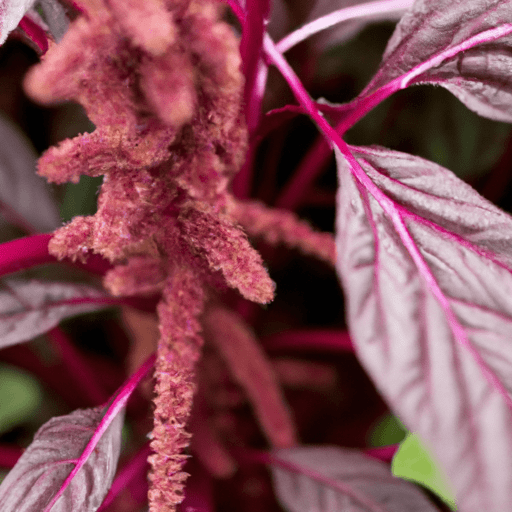Exploring the Nutty Goodness of Amaranth Grain
If you are a lover of ancient grains, then amaranth should definitely be on your radar. This tiny pseudocereal boasts a nutty flavor, a versatile culinary nature, and impressive nutritional benefits. Let’s dive into the world of amaranth grain and discover why it’s becoming increasingly popular on kitchen tables worldwide.
A Taste of Nature’s Nuttiness
When it comes to taste, amaranth grain introduces a delightful, nutty flavor that is loved by many. This unique characteristic adds depth to a variety of dishes, making it a versatile ingredient in both sweet and savory recipes.
Culinary Uses: From Breakfast to Dinner
Amaranth grain’s culinary applications are vast, making it a valuable addition to any pantry. Here are some fantastic ways to incorporate this ancient grain into your daily cooking adventures:
1. Hearty Hot Breakfast Delights
Start your day on a nutritious note by preparing a warm, wholesome breakfast with amaranth grain. Simply cook it with water or milk to create a creamy porridge. Top it with your favorite fruits, nuts, and a drizzle of honey for a delicious and energizing start to your day.
2. Nutrient-Packed Side Dishes
Amaranth grain can be transformed into delightful side dishes that perfectly complement any main course. Cook it as you would rice, and toss it with sautéed vegetables and herbs for a delightful grain salad. Alternatively, mix cooked amaranth with roasted butternut squash, feta cheese, and a tangy vinaigrette for a flavorful side dish that will wow your guests.
3. Wholesome Gluten-Free Baking
For those on a gluten-free diet, amaranth grain can be an excellent substitute in baking. Blend it into a fine flour and use it to create delicious pancakes, muffins, and bread. Its nutty flavor will add a unique touch to your baked goods while enhancing their nutritional value.
Nutritional Superstar
Amaranth grain not only tantalizes our taste buds but also delivers a host of essential nutrients. It is a fantastic source of protein, fiber, and minerals such as iron, magnesium, and phosphorus. Moreover, it contains impressive quantities of lysine, an essential amino acid often found lacking in other grains. These nutritional qualities make amaranth grain a valuable ingredient for vegetarian and vegan diets, aiding in maintaining a well-balanced and healthy lifestyle.
An Ancient Grain with a Rich History
Amaranth grain has long been cherished for its cultural and historical significance. In ancient Aztec civilizations, it was considered a staple crop and even held ceremonial importance. Over time, it fell into obscurity but is now experiencing a renaissance in the culinary world. Embracing amaranth grain in your kitchen connects you with a rich heritage while also enjoying its unique culinary benefits.
Fun Fact Friday: Aztec “Superfood”
Did you know that amaranth grain is often referred to as an Aztec “superfood”? The Aztecs believed that its consumption provided them with not only physical, but also spiritual strength. They used it as a crucial part of their religious ceremonies! This fascinating tidbit spotlights the cultural significance of this ancient grain.
In conclusion, amaranth grain is a tiny powerhouse that offers a delightful nutty taste, versatile culinary options, and notable nutritional benefits. Whether you decide to enjoy it for breakfast, in a side dish, or as part of your gluten-free baking adventures, amaranth grain is sure to elevate your cooking game. So, embrace this ancient grain and embark on a culinary journey that adds taste, health, and history to your meals.
Amaranth Grain
Origin: Amaranth grain is derived from the Amaranthus plant, which is native to the Americas, particularly Central and South America. It has been grown and consumed for thousands of years, with evidence of its cultivation dating back to the Aztec civilization.
Common Uses: Amaranth grain can be cooked and eaten as a grain similar to rice or quinoa. It has a slightly nutty flavor and a light, fluffy texture when cooked. It can be used in a variety of dishes, such as salads, soups, stir-fries, and porridges. Amaranth grain can also be ground into a flour and used in baking.
Nutritional Benefits: Amaranth grain is a nutritious ingredient, rich in protein, dietary fiber, and various minerals. It contains all the essential amino acids, making it a complete protein source. Additionally, it is a good source of iron, magnesium, phosphorus, and manganese. Amaranth grain is also gluten-free and suitable for those with celiac disease or gluten sensitivity.
Unique Properties: One unique property of amaranth grain is its high concentration of the amino acid lysine. Lysine is often lacking in other grains, making amaranth an important addition to vegetarian and vegan diets. Amaranth also contains a unique group of antioxidants called betalains, which are responsible for its vibrant red, purple, or gold color.
Historical Significance: Amaranth grain has a rich history and cultural significance in Central and South America. In ancient civilizations, it was considered a sacred food and used in religious ceremonies. Following the Spanish conquest, it was banned due to its association with indigenous rituals. However, amaranth grain has made a comeback in recent years and is now enjoyed worldwide for its nutritional value and versatility.




Use the share button below if you liked it.
It makes me smile, when I see it.